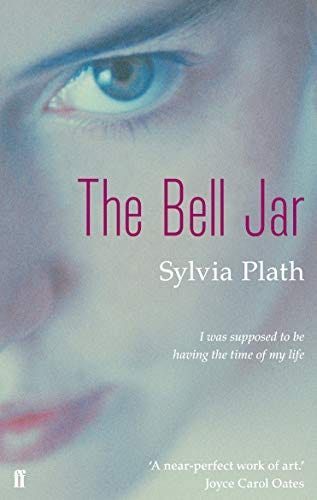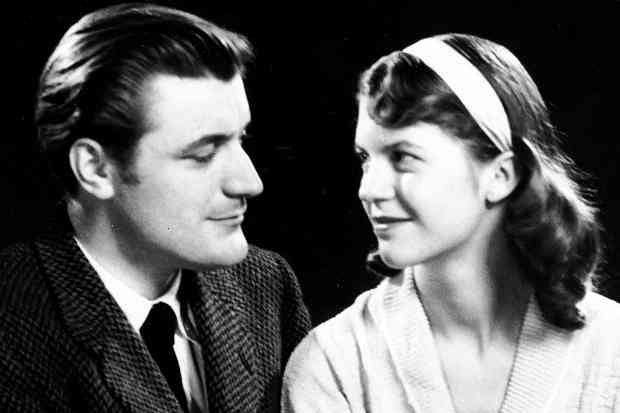Welcome to A Narrative of their Own, where I discuss the work of 20th century women writers and their relevance to contemporary culture.
I recently finished reading The Last Confessions of Sylvia P by Lee Kravetz, a novel exploring the fine line between the fact and fiction of the life of Sylvia Plath.
The story is told from the point of view of three narrators: Estee, a Master Curator, who has just been handed what appears to be a handwritten manuscript of The Bell Jar; Boston Rhodes, a fictionalised poet involved in the infamous poetry group run by poet Robert Lowell, and attended by Sylvia Plath; and the real-life psychiatrist Dr Ruth Barnhouse, who treated Plath at McLean Hospital in 1953.
The book was interesting: Boston Rhodes’ increasingly erratic jealousy at the popularity and talent of Plath is almost pathological, and the character appears to be an amalgamation of several real-life contemporaries of Plath, including the poet Anne Sexton. Plath herself appears in both the Boston Rhodes narrative, as a contemporary and fellow member of Lowell’s poetry workshop on confessional poetry; as well as appearing in the Ruth Barnhouse sections as her psychiatric patient.
I found the idea for the novel fascinating and it reminded me very much of other literary metafictions, most obviously Michael Cunningham’s The Hours and AS Byatt’s Possession (both of which have been noted by other critics). I did find the ending a little implausible however, and there were some dubious plot holes. But what really interested me was the ‘character’ of Dr Ruth Barnhouse and her backstory. Kravetz portrays the real-life doctor who inspired the fictional composite Dr Nolan in Plath’s Bell Jar as a kind of young maverick in a facility dominated by male psychiatrists.
I love Plath and learning and writing about her life and her work, and have done so in several essays within this newsletter. But after reading this book, I found I wanted to know more about the psychiatrist who was credited with giving her reason to continue her studies and her writing life. I wanted to know more about Dr Ruth Barnhouse and her own demons, as well as her work at McLean Hospital.
McLean Hospital is a psychiatric hospital based in Belmont, Massachusetts, founded in 1811 and is the largest psychiatric establishment of Harvard Medical School. It is known for its work in particular with adolescents and more specifically its treatment of borderline personality disorder.
In the past, the facility has arguably become infamous for treating such well-known patients as the mathematician John Nash, musicians James Taylor and Ray Charles, writers David Foster Wallace and Susanna Kaysen, and the poets Robert Lowell, Anne Sexton, and of course, Sylvia Plath.
In her own 1993 memoir about her experience at McLean in the 1960s, writer Susanna Kaysen portrays herself as an adolescent diagnosed with borderline personality disorder and finds herself within the hospital’s wards amongst an array of colourful fellow patients (the 1999 film adaptation features Winona Ryder as Kaysen and a remarkable appearance by Angelia Jolie as Lisa). Kaysen shows how her disillusioned teenage self became deeply influenced by the other women at the facility, and the book is fascinating in its inclusion of copies of real medical notes of her time there.
Though both Kaysen and Plath chose to utilise their own experiences at McLean as copy, Plath fictionalised her story into that of Esther Greenwood’s in The Bell Jar, with Dr Barnhouse becoming ‘Dr Nolan’.
“I liked her, I loved her, I had given her my trust on a platter and told her everything.” Esther Greenwood of Dr Nolan in The Bell Jar.
Ruth Tiffany Barnhouse was a psychiatrist at McLean when a 20 year old Plath was admitted in 1953. Homeschooled by her grandmother Tiffany (a distant cousin of the famous Tiffany’s jewellery family), and having a high IQ, Barnhouse was admitted to Vassar College at the age of fourteen, enrolling to attend at sixteen.
Eloping at the age of 17 in 1941 with her first husband, Francis Charles Edmonds Jr. after her father forbade the marriage, she shortly after regretted this but felt she had to stay as she was pregnant. She had two children with Edmonds, divorcing him in 1947 and returning to her studies. She attended Barnard College and the College of Physicians and Surgeons at Columbia University, where she met and married another medical student, Dr William F Beuscher.
The couple went on to have five sons together by 1960. This second marriage ended in 1968, Barnhouse citing emotional abuse and alcoholism, and she began the difficult work of caring for her sons as a working single mother.
Barnhouse began her psychiatric residency at McLean Hospital in July 1953 at the age of 29; Plath was admitted in September and became one of her first patients there, following her first suicide attempt. Though Plath was stabilised by daily therapy sessions with Barnhouse and insulin injections, she remained suicidal, and in December of that year it was suggested that she undergo electroshock therapy, which she had previously received at another facility.
Ensuring these were administered properly (unlike her first experience), this time around the therapy was so successful that Plath only required two sessions. She was felt to be functioning so well that she was released from McLean in January and returned to her studies at Smith. Barnhouse claimed that she continued to see Plath each time she returned to Boston, and helped to lobby for Plath to receive the Fulbright Scholarship to attend Cambridge University.
“Getting a Fulbright in the middle of the McCarthy Era for someone who had been in a mental hospital wasn’t easy.” Dr Ruth Barnhouse
Barnhouse later continued her work with Plath as she saw her for weekly therapy sessions in 1959 whilst she was living in Boston and newly married to Hughes.
During these sessions, Barnhouse began to delve into Plath’s difficulties in dealing with her father’s death and her fantasies that he was still alive. She also developed the understanding that Plath did not have an issue with men, but with other women, in particular Hughes’ sister Olwyn whom she blamed for his inability to have healthy relationships with women, citing that the pair slept in the same bed until the age of seven and nine respectively.
When Plath left to live in England with her husband, she continued to write to the psychiatrist, their letters becoming something of a lifeline for Plath. She spoke in these of such topics as her marriage to Hughes, her worries over his possible infidelity, and her concerns that becoming a mother may destroy her creative work.
The last of these letters arrived in 1963, just one week before Plath’s suicide. The letters revealed a dark time in the couple’s marriage, with Plath stating that Hughes had beaten her just two days before she suffered a miscarriage, and that he could not accept their second child Nicholas, seeing him, as a male child, to be a usurper to his ‘male dominance’.
Barnhouse went on to say that she felt that Hughes’ abandonment of Plath resurrected her neurosis over her father’s abandonment through his early death, and sent her into a spiral of depression culminating in her suicide. In Plath’s final letter, she admitted to ‘the madness’ returning for the first time in years.
The pair continued to correspond throughout Plath’s short life, though Barnhouse destroyed most of the letters, with only fourteen from Plath to Barnhouse remaining, (presumably the ones Kravetz used for the final section of the novel.)
Barnhouse claimed to regret burning much of Plath’s earlier correspondence, which showed a Plath full of life and exuberance, living in both Cambridge and Paris.
Later in life, Barnhouse switched careers, becoming ordained as a priest in the Episcopalian Church at the National Cathedral in Washington, DC in 1980. Later the same year, she accepted an offer from the Perkins School of Theology in Texas to join its teaching faculty, where she was one of only 500 female priests nationwide, and the only one in Dallas.
It seems clear that Dr Ruth Barnhouse (later Beuscher) held more than just a doctor/patient relationship. Their continued correspondence shows a mutual trust and connection between the two women.
In an interview in Salon magazine, Barnhouse spoke about the way her then husband, William Beuscher, informed her of Plath’s death, casually, without even glancing in her direction. There had been problems within the marriage for some time, Barnhouse claimed, but this brutal disclosure of someone she held as a friend became the breaking point of the marriage for her.
Barnhouse claimed later in life that she felt it may have been possible to have saved Plath from her eventual suicide if she had remained in her care, receiving regular therapy to tackle her issues, particularly surrounding her father’s death.
If you value the work that goes into writing this newsletter, consider becoming a paid subscriber today. Your support makes this work possible.








What a fascinating and heart-rending post. Thank you
Wow. So insightful. I regrettably haven't read Plath's writing YET. I actually just got a collection of her poetry and a copy of The Bell Jar (I also have Girl, Interrupted!), but I've yet to read them. However, I'm glad to have read your insights into Dr Barnhouse prior. I'm curious how that will color my own reading of Plath's work. Thank you for sharing this Kate! As always, your posts are a pleasure.